The Myanmar “longyi.” a sarong-like nether garment is an integral part of the Myanmar national dress worn by men as well as the fairer sex. It is basically a piece of cloth sown into a cylindrical tube. slipped over the head by men and stepped into by the women and tucked in at the waist. Men and women however fasten their longyis at the waist in different ways. Men fold the garment into two panels and knot it neatly at waist level. In olden days the knot was tied neatly and sported a triangular flap. For the ladies it is a wrap-around skirt tucked in at the side of the waist. It may be wrapped from right to left. which is more common. or from left to right. depending on the comfort of the wearer. The term “longyi” refers to this nether garment in general for both men and women. But the ladies skirt has a plain black strip of cotton about 5 inches wide sewn and attached to the top part of the circular skirt. It is known as “Ahtet hsin”. It helps to keep the longyi firmly in place especially if it is of silk or satin. It prevents frequent adjusting and keeps the skirt neat and level. To further differentiate between men and women’s wear. the garment for men is known as “pasoe” and for women. “htamein.”
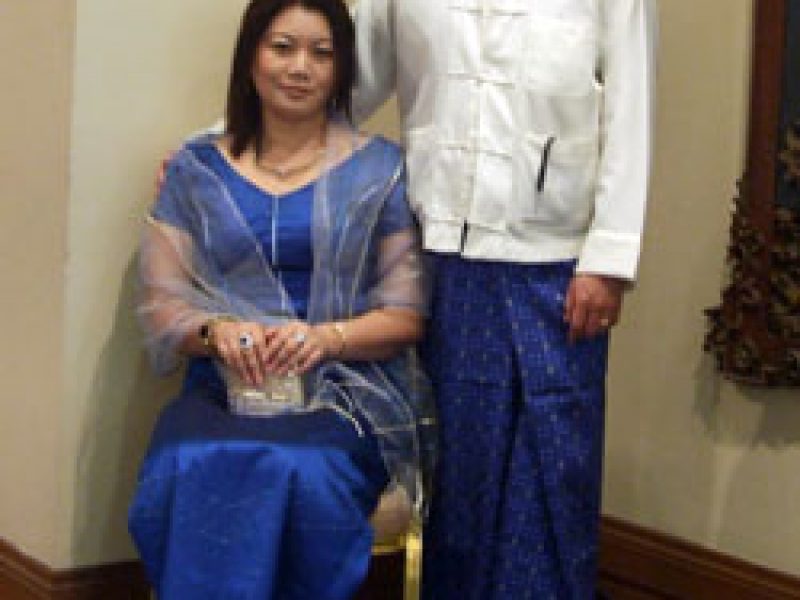
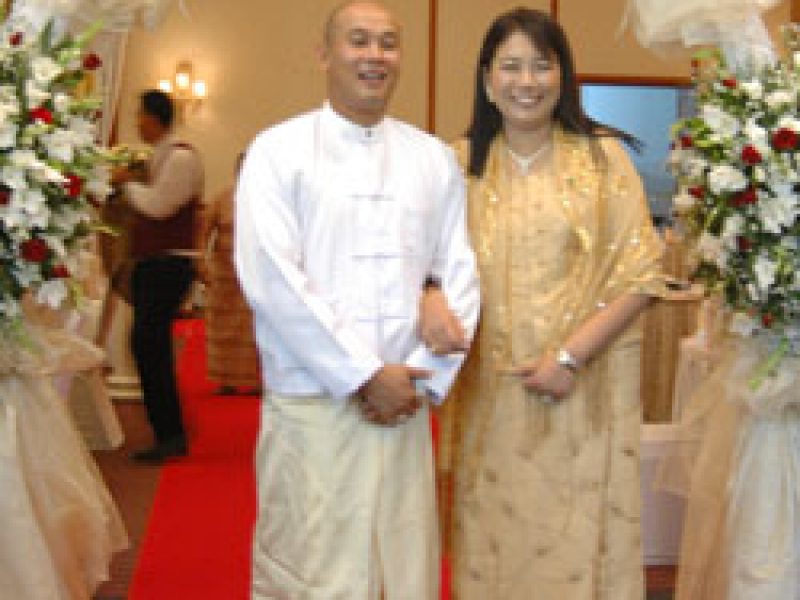
These garments are usually made of cotton for everyday wear and of silk. satin or the better quality synthetic fabrics for formal wear. The masculine patterns are mostly checks or squares or sometimes vertical stripes or horizontal circular bands. Most men shun flowered patterns but they do sometimes wear the silk “acheik”. the horizontal “wave patterned” bands of bright coloured silks on ceremonial occasions. The “acheik” is a traditional royal design for both and women and it is said that the ancient designers were inspired by the waves and ripples of the Ayeyarwady River. The main centre for silks and cottons is Amarapura and Mandalay. but there are other famous silk and cotton weaving industries in the Inle region. the Rakhine State and Mon State.
The Kachin and Chin State also have their special hand woven designs. But the Inle silks with their artistic flowered patterns are popular with the ladies. Then there are the silks and cottons with designs of a hundred small birds known in Myanmar as “Kye Tayar” and checkered patterns with tiny dots and stars in the centre of each square. which are much in demand. Each of these longyis is traditionally hand woven on small looms in the town of Yaw on the west bank of the Ayeyarwady River in Central Myanmar. Nowadays these longyis are popular with men as formal wear.
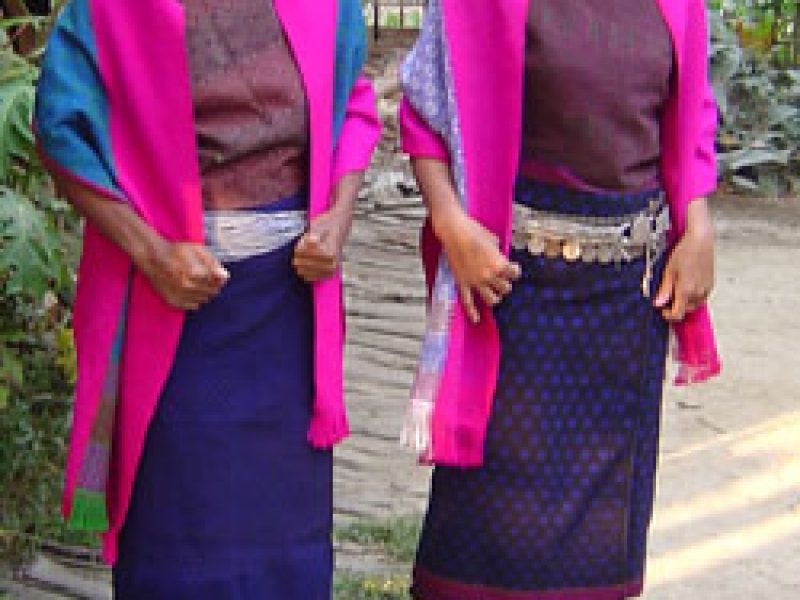
The ladies of course have a wider choice. They wear patterns of flowers. stars. checks. stripes. or even impressionistic splashes of all colours and shapes. Some prefer self coloured plain textiles of bright or sombre hues. The “longyi” is thus the basic lower garment of Myanmar wear. Topwear is another matter altogether. especially for the fair sex.
In the old days. men wore a stiff-collared shirt. buttoned down the front and it was usually white. It is the same as a western style shirt. and this has been worn ever since they abandoned the traditional Myanmar style long shirt. The shirt was either long-sleeved or short-sleeved. Men usually wore short-sleeved shirts with collar on informal occasions. But today. they have switched to T-shirts and sports shirts of all colours and designs for casual wear. But they still wear the longyi for all occasions. Formal occasions and office wear require men to don a jacket over the shirt. The jacket is of thicker material than the shirt and is worn open in front but has Chinese style cloth buttons and loops on each side. They hardly ever button up the front. It has two large pockets below and two smaller ones at the top on both front panels.
Formerly top wear for the ladies consisted of a waist-length blouse known as an “Aingyi”. At one time its length was waist length but worn to show the “Ahtet Hsin”. But later it was further lengthened to just about cover the black strip of cloth on the ladies’ longyi. The blouse had a squarish flap that was buttoned at the side. somewhat like the top half of the Chinese Cheongsam. The blouse had no fixed buttons. just loops. Buttons of all shapes and colours would then be fastened on these loops. Each button had a ring through which the loop would be passed and then slipped over the button to keep it in place. There were always five loops for the set of five detachable buttons – one below at the front. three at the side and one at the neckline.
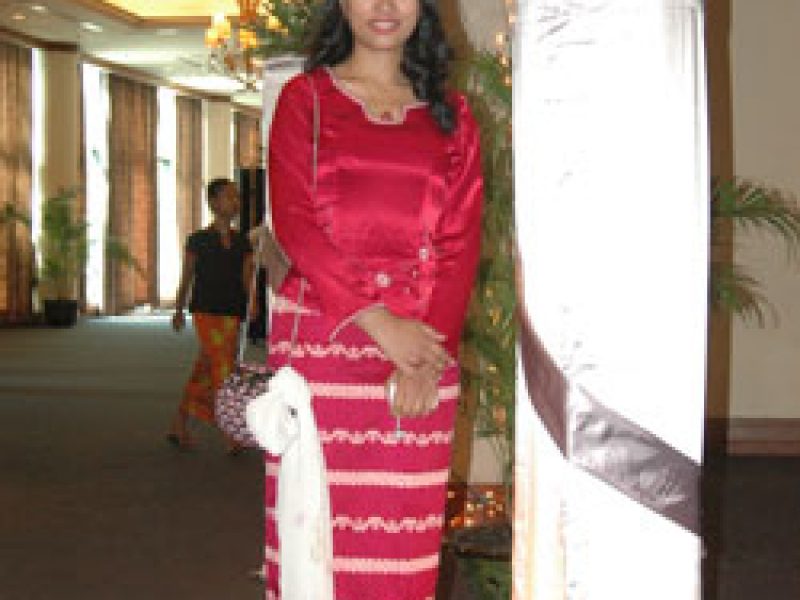
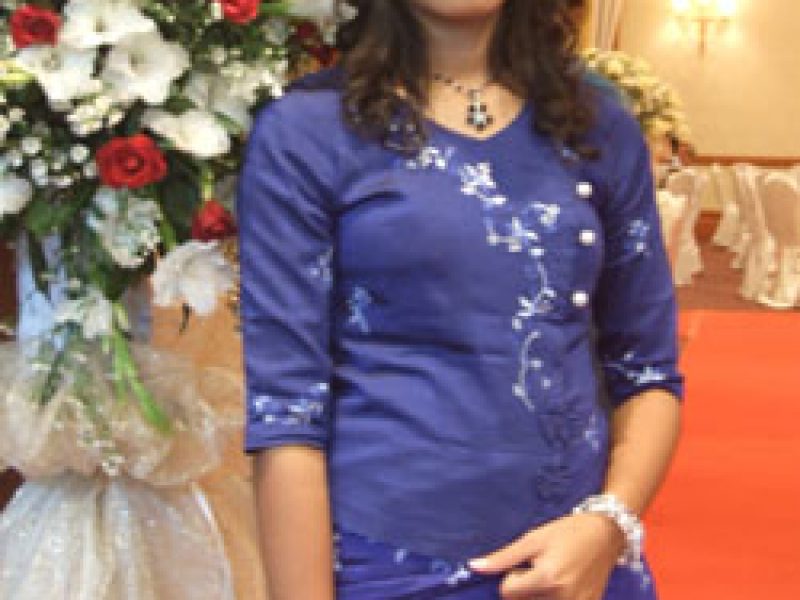
The ladies could thus keep a variety of buttons and select them to match the skirt and blouse to be worn. Wealthy ladies wore buttons of gold and diamonds. rubies. sapphires. pearls and other precious and semi-precious gems. There was another style popular in the 1930s. It was a blouse with a front opening with button loops down the front. This style was called the “Yin Si”. meaning as opposed to the “Yin Hpone” with the opening at the side. Before World War II only long sleeves were worn. and at one time the sleeves were loose and flared at the bottom. The jackets were made of thin coloured or printed material.
The plain white blouses often had embroidery on the hems of sleeves or waist. Then during World War II ladies began to shorten the length of their sleeves. One reason given was that cloth was scarce during the war;in fact it was unavailable. But the ladies’ jackets. after many washings. began to show signs of wear and tear especially at the elbows. So some enterprising Myanmar lady cut off the lower half of the sleeves rather than wear a torn aingyee or discard it altogether. This is said to have set the fashion for short sleeves. that grew shorter as the years went by and finally ended up as a sleeveless blouse.
The quarter length sleeves also came into fashion together with a stiff chinese style collar. Although the Chinese collar is no longer very popular the quarter-length sleeves has now claimed a permanent spot in Myanmar fashions. The blouse material also grew thinner and more transparent to show off the dainty lace and embroidery of the under garment – a long-line bra that tucked into the skirt. This fashion of transparent top wear had its roots just before the Second World War and was highly disapproved of by the general public and the Buddhist clergy who found it immodest. offensive and unpatriotic as well.
So when the fashion re-emerged after the War it still failed to gain the approval of our straight-laced Myanmar society. So it enjoyed only a short period of popularity. But the enduring longyi stayed the same throughout the intervening years.
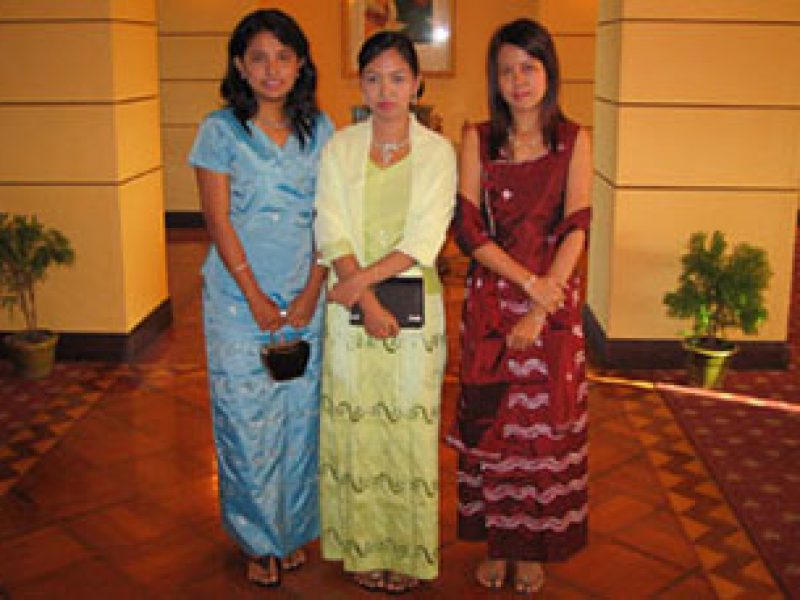
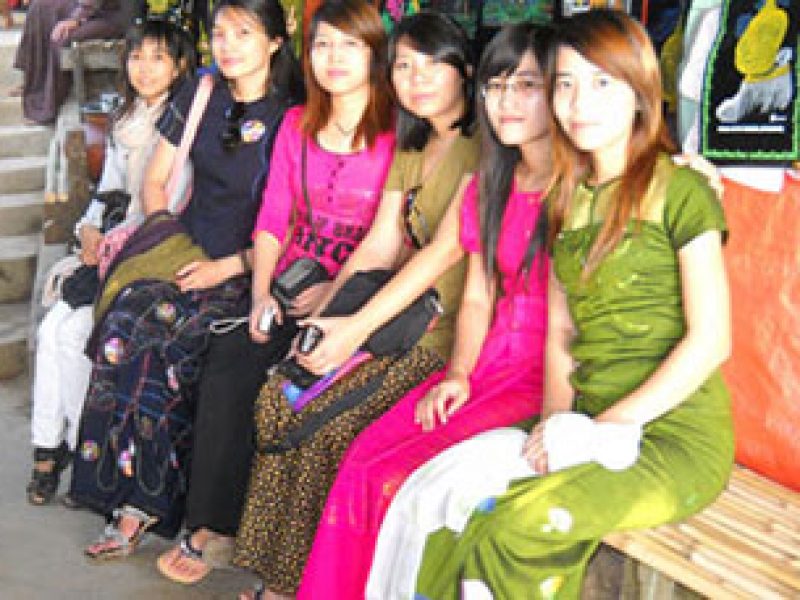
Today. ladies’ top wear. especially casual wear has gone overboard. The traditional Myanmar blouse has not been entirely discarded and is still kept in reserve to be worn on every formal occasion. But most Myanmar ladies. young and old have taken to wearing loose and comfortable western style blouses and T-shirts of all designs and colours. But they still wear them over the longyi. Some of these blouses are so long they almost cover the knees. Necklines have also been lowered both front and back. and some have been daring enough to wear tank tops. but with the ubiquitous longyi. Not only do parents and elders frown on this daring style. the innate modesty of most Myanmar girls has prevented the proliferation of immodest fashions.
Even the calf-length longyi that was in vogue a short time ago. is over its heyday and the Myanmar longyi is back to ankle-length. I think Myanmar women are smart enough to realize that the longyi can hide a multitude of sins especially if one happens to be short and stocky. Moreover the long sweep of the longyi enhances the beauty and elegance of our young and lissome girls. They appear both slinky and innocent. So the longyi is still the favoured garment. The Myanmar ladies have experimented and adopted new fashions and styles. yet they cling to traditional fashions. For them there is a time and place for different fashions. The Myanmar long-sleeved jacket is still worn by housewives. office workers. teachers and Middle schoolchildren. The longyi and the Myanmar style jacket are a MUST for all formal occasions.
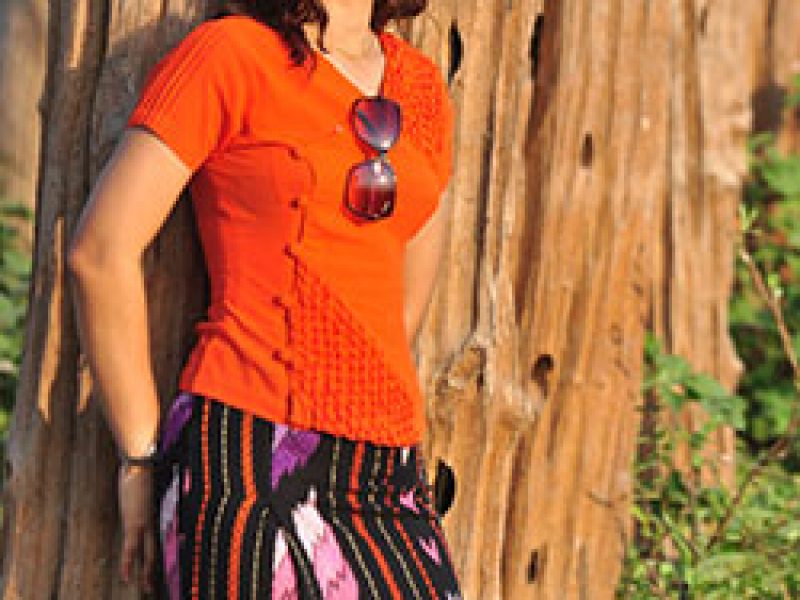
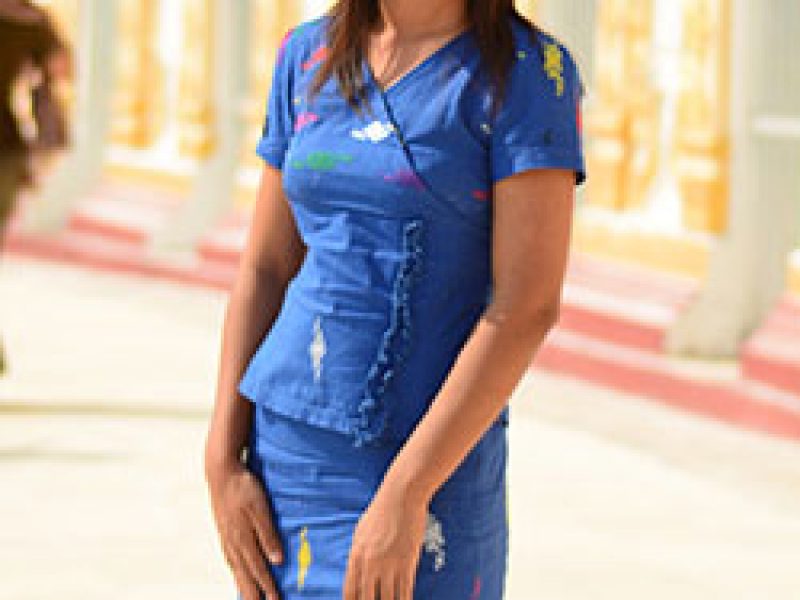
It is true today’s fashions have brought about some changes in ladies’ longyis. They may have slits at the sides. front or back. They may have a false front flap and maybe worn by zipping it up at the side or back. They may also wear it shorter than the traditional longyi. But the cut and pattern is still recognizable as a Myanmar longyi. But for informal wear. nothing can beat the comfort of the old tube- shaped cylinder which is still worn by almost all Myanmar people. men and women alike. For however modern one maybe. the “pasoe” or “htamein” is still very much favoured over jeans.trousers. mini and midi skirts and what have you.
The Myanmar longyi is also catching on as fashionable wear for foreigners. Tourists of both sexes can be seen in longyis on the streets of Yangon and I have heard that the wrap-around skirt has become quite a fashion in some countries like Australia. I think fashions in Myanmar may come and go. but the longyi will go on forever. There are a variety of textiles in Myanmar and some popular ones are Acheik. Silkware and Lotus robe.
